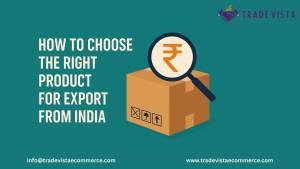Prime Ministers Keir Starmer and Narendra Modi signed a landmark Free Trade Agreement (FTA) between the United Kingdom and India on May 6, 2025. This long-anticipated deal removes 8–12% tariffs on textile exports, immediately unlocking fresh opportunities for Indian manufacturers and investors (Vogue Business).
With Indian textile exports to the UK valued at approximately $1.2 billion in 2023 (Fibre2Fashion), this deal is poised to remove competitive disadvantages versus countries like Bangladesh and boost India’s trade significantly.
Let’s explore what this FTA means for India’s textile industry and why stocks like Indo Count, KPR Mills, and Vardhman Textiles are in the spotlight.
Background on the UK-India Trade Deal
Timeline & Highlights
After 14 rounds of negotiations, the FTA was officially concluded on May 6, 2025. It is immediately effective for several sectors, including textiles, one of India’s highest-volume export categories.
Key highlights include:
- 99% of Indian exports to the UK will now enter tariff-free.
- 90% of British imports to India also see reduced duties (World Economic Forum).
- Faster customs clearance and regulatory cooperation mechanisms.
Why Textiles?
The textile sector plays a central role in this agreement for several reasons:
- Bilateral trade in textiles and apparel costs £2.4 billion annually (The Times of India).
- Previously, Indian exports faced tariffs up to 12%, while Bangladesh enjoyed duty-free access.
- The FTA levels the playing field for Indian exporters competing in the UK market (GOV.UK).
Impact on India’s Textile Sector
Sector-wide Outlook
The FTA is expected to transform the Indian textile landscape:
- Competitive advantage regained: India can compete equally with Bangladesh, China, and Turkey in the UK market.
- Export forecast: Indian textile exports to the UK will nearly double to $2.4 billion by 2030 (Fibre2Fashion).
Market Reaction
Investor sentiment has already reflected this optimism:
- Stocks in the cotton and apparel segments jumped 5–12% immediately after the deal’s announcement (Economic Times).
- However, fund managers remain cautious about valuations and urge attention to long-term implementation and earnings impact (Moneycontrol).
Three Textile Stocks to Watch
Indo Count Industries
Profile:
Indo Count is the world’s largest home textile bed linen exporter, and 12% of its revenue comes from the UK.
Financials:
- 9MFY25 revenue: ₹31.6 billion (+26% YoY)
- EBITDA margin: 15.3%
Valuation:
- PE ratio: 19× vs. 10-year median of 13×
Why it matters:
Indo Count’s strong brand presence and operational scale position it to capitalize immediately on reduced tariffs (The Financial Express).
KPR Mills
Profile:
An integrated textile player with operations from yarn to garment, exporting 36% of its output, with 56% of exports headed to Europe.
Financials:
- 9MFY25 revenue: ₹46.2 billion (+6% YoY)
- Net profit: ₹6.1 billion
Valuation:
- PE ratio: 55× vs. median 18×
Why it matters:
While richly valued, KPR’s vertically integrated model ensures better margin capture from tariff savings.
Vardhman Textiles
Profile:
One of India’s top cotton-yarn spinners with 1.2 million spindles and 41% of revenue from exports.
Financials:
- FY25 sales: ₹97.8 billion (+3% YoY)
- Profit before tax: ₹11.4 billion
Valuation:
- PE ratio: 16× vs. median 10×
Why it matters:
Vardhman’s strong export base and yarn-focused model align well with long-term demand growth under the FTA regime.
Investment Considerations
Valuation Risk
Many textile stocks have already surged post-deal. For example, Gokaldas, Arvind, and KPR saw gains between 8% and 19%, prompting caution over stretched PE multiples (Moneycontrol).
Margin Expansion
Removing tariffs could enhance net margins by 8–10%, especially for companies with high UK exposure (Fibre2Fashion).
Capacity Expansion
Many players are announcing or planning brownfield and greenfield projects to scale exports, especially in segments like home textiles and apparel (The Financial Express).
Global Diversification
Beyond the UK, this deal may serve as a template for FTAs with Canada, Australia, and Japan, enabling a broader export push.
The UK-India Free Trade Agreement is more than just a diplomatic win—it’s a high-impact catalyst for India’s textile industry. For investors, stocks like Indo Count, KPR Mills, and Vardhman Textiles offer compelling exposure to this unfolding opportunity. However, with valuations elevated post-announcement, strategic timing and stock selection will be critical.
To make informed investment decisions in 2025, monitor tariff-led earnings growth, UK demand patterns, and capacity investments closely.
FAQs for UK-India FTA
What is the UK-India textile FTA?
The FTA, signed on May 6, 2025, removes 8–12% tariffs on textile exports from India to the UK, making Indian products more competitive.
Which textile stocks benefit most?
Indo Count Industries, KPR Mills, and Vardhman Textiles are three primary beneficiaries, and they all have significant export exposure to the UK.
How will margins improve?
Duty elimination can result in up to 10% cost savings, translating into better EBITDA margins for exporters.
When will export volumes grow?
Industry experts project a doubling of textile exports to the UK by 2030, aided by the FTA’s cost advantages and faster logistics.
Should I invest in textile stocks now?
While fundamentals are strong, current valuations are high. Investors should monitor FTA implementation and company-specific expansion plans.




